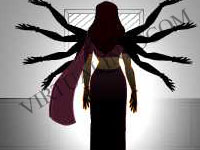Press News
- Outsourcing: Arijit Bhattacharyya, CEO of VirtualInfoCom
- Sillicon India The story of Arijit Bhattacharyya
- Entrepreneurial success story of Arijit Bhattacharyya
- Entrepreneurship in Bengal: A Blueprint for India’s Next Stage of Development
- virtualinfocom Creating Multiplatform Game Mahabharat
- Start Ups In Today’s Economy – Employment and Growth Factor
- About our Founder at Yourstory.in
- VirtualInfocom establishes game development club at Jaipur
- Game on - The Time of India 22 - 03 - 2010
- virtualinfocom gave franchisee at Jaipur
- Economic Times News ET Friday
- Virtualinfocom, Kolkata launches online animation tutorial 'Pencil2Pixels'
- Virtualinfocom, developing mytho games and comics on 'Ravana'
- Virtual Infocom in midst of developing resource portal for Inde game developers
- Virtualinfocom: Game Design Training Institute Launches New Portal for Collaboration
- virtualinfocom To release Indian Comics
Durga Puja Animated 2011















The Durga Puja traditionally begins on the Mahalaya in Ashwin month, a day when Chandi Stotram is recited as an invitation for Goddess Durga to descend to earth.
We at virtualinfocom wanted to show the different form of Goddess Durga ; we do think that goddess is inside of real women of India .We have tried to show the various form of devi durga within women, girls and teen age girl .
As the essence of ‘Shakti’ (divine power), we worship Durga as the mother goddess, to save ourselves from the evil and bring peace in our lives. But the most interesting part of Durga Puja is that, we embrace her in our hearts and make her an inseparable member of our family. Goddess Durga is welcomed to the earth as our daughter who visits her parents’ home annually. Durga, along with her children, Ganesha, Laxmi, Kartik and Saraswati, stays for four days (Sashti, Saptami, Ashtami and Nabami) and sets for her husband’s home on Vijaya Dashami. Her modes of journey to the earth signify luck which influences the life on earth. Journey on The elephant signifies prosperity and good harvest while journey on a horse back indicates drought, a palanquin spells wide spread epidemic and the boat suggests flood and misery.
The worship of Devi Durga in the month of October however owes its origin to Krittibas Ojha’s “Ramayana” Rama went to ‘Lanka’ to set free his abducted wife, Sita, from the grip of Ravana, the king of the Demons in Lanka. Before starting for his battle with Ravana, Rama wanted the blessings of Devi Durga . He came to know that the Goddess would be pleased only if she is worshipped with one hundred ‘NeelKamal’ or blue lotuses. After travelling the whole world, Rama could gather only ninety nine of them, so, he decided to offer one of his eyes, which resembled blue lotuses. Durga, being satisfied with the dedication of Rama, appeared before him and blessed him. The battle among Rama and Ravana started on the ‘Saptami’ and Ravana was finally killed on the ‘Sandhikshan’ i.e. the intersect period between Ashtami and Navami and that is why the ‘Sandhi puja’ is done on that specific time. Finally, Ravana was cremated on Dashami. Since the period of this worship was different from the conventional period (during the spring – ‘Basanta’), Durga Puja was also known as Basanti Puja and as Rama worships the Devi in autumn, it is known as ‘Akal Bodhon’ or untimely worship Over the years, this Akal Bodhon has become the tradition among Bengalis and in Bengal.
Latin:
Sicut essentia 'Shakti (divinae potentiae), adoramus Durga matrem deam nos a malis et salvandi animas in pacem. Sed pars magis interesting Durga Puja est, amplectimur et ponam eam in corde suo inseparabile membrum familiae nostrae.Durga dea est susceptus in terram nostram visitat filiae parentum domo annuatim. Durga cum filiis suis, Ganesha, Laxmi, et Kartik Saraswati, per quatuor dies moratur (Sashti, Saptami, et Ashtami Nabami) and sets in domo mariti Vijaya Dashami. Eius modi fortunam itur in terris sunt significent quod influit in terris vitam. C. de bonis et elephantum significatur cum messis in equo iter ostendit back siccitate late diffusus spells LECTICULA a pestilentia et auctor eget diluvium et miseria.Cultus Devi Durga originem habet autem in mense octobris ipsius Krittibas Ojha "Ramayana" Rama venit, Lanka, libero abductam uxorem eius, Sita, a Ravana tenent de rege in Lanka daemones. Ante initium illius pugna Ravana, benedictionibus Devi Durga wanted Rama. Venit tantum scire quod si dea esset, placuit cum centum colitur 'NeelKamal vel lotuses risus. Post iter totius orbis congregare non potuit Rama nonaginta novem, ita statuit inter oculos suos offerat, quod caeruleum lotuses similis. Durga, contentus dedicatione Rama, apparuit ei benedixit. Pugna inter Rama et Ravana started qui "Saptami et tandem Ravana occisis 'Sandhikshan' id temporis inter secant et Ashtami Navami et inde est quod` Sandhi puja, quod fit imprimis tempore. Postremo Ravana erat Gaii in Dashami. Cum tempus erat, qui cultus erat placitum tempus (per ver - Basanta), quoque notus ut Durga Puja Basanti Puja Rama et adorat Devi autumnalis scitur ut Akal Bodhon aut immatura cultus Lorem ipsum dolor sit hoc factum Akal Bodhon Bengalis inter traditionem et malesuada.
Le culte de Durga Devi dans le mois d'Octobre doit cependant son origine à Krittibas Ojha du «Ramayana» Rama est allé à «Lanka» pour libérer sa femme enlevée, Sita, de l'emprise de Ravana, le roi des démons à Lanka. Avant de partir pour son combat contre Râvana, Rama a voulu la bénédiction de Devi Durga. Il est venu à savoir que la déesse serait heureuse que si elle est vénérée avec une centaine de «NeelKamal» ou lotus bleu. Après avoir parcouru le monde entier, Rama pu recueillir que 99 d'entre eux, donc, il a décidé d'offrir un de ses yeux, qui ressemblaient à des lotus bleu. Durga, étant satisfait de l'engagement de Rama, a comparu devant lui et le bénit. La bataille entre Rama et Ravana a commencé sur le «Saptami et Ravana a finalement été tué sur le« Sandhikshan «dire la période entre Ashtami croisent et Navami et c'est pourquoi la" puja Sandhi 'est fait sur ce moment précis. Enfin, Ravana a été incinéré le Dashami.Depuis la période de ce culte était différent de la période classique (au cours du printemps - 'Basanta »), Durga Puja est aussi connu comme Puja Basanti et comme Rama Devi adore la en automne, il est connu comme« Akal Bodhon »ou le culte prématurée Au fil des ans, cette Bodhon Akal est devenu la tradition chez les Bengalis et au Bengale.
De verering van Devi Durga in de maand oktober dankt echter zijn oorsprong aan Krittibas Ojha's "Ramayana" Rama ging naar 'Lanka' om vrij zijn ontvoerde vrouw Sita, die uit de greep van Ravana, de koning van de demonen in Lanka. Voor het starten van zijn gevecht met Ravana, Rama wilde dat de zegeningen van Devi Durga. Hij kwam te weten dat de Godin graag alleen als ze wordt vereerd met de honderd 'NeelKamal' of blauwe lotussen. Na een reis de hele wereld, Rama kon alleen negenennegentig van hen te verzamelen, dus besloot hij een van zijn ogen, die blauwe lotussen leek te bieden. Durga, die tevreden is met de inzet van Rama, verscheen voor hem en zegende hem. De strijd tussen Rama en Ravana begonnen op de 'Saptami' en Ravana werd uiteindelijk gedood op de 'Sandhikshan', dwz de periode tussen kruisen Ashtami en Naumi en dat is de reden waarom de 'sandhi puja' is gedaan op dat specifieke moment. Ten slotte werd Ravana gecremeerd op Dashami. Sinds de periode van deze aanbidding was anders dan de conventionele periode (in het voorjaar - "Basanta '), Durga Puja was ook bekend als Basanti Puja en als Rama aanbidt de Devi in de herfst, het is bekend als' Akal Bodhon 'of niet tijdig aanbidden In de loop der jaren is deze Akal Bodhon uitgegroeid tot de traditie onder Bengalen en in Bengalen.
La adoración de Devi Durga en el mes de octubre sin embargo, debe su origen a Krittibas Ojha el "Ramayana" Rama fue a "Lanka" para liberar a su esposa secuestrada, Sita, de las garras de Ravana, el rey de los demonios de Lanka.Antes de comenzar su batalla contra Ravana, Rama quería las bendiciones de Devi Durga. Él vino a saber que la diosa se complace sólo si es adorado con un centenar de 'NeelKamal "o flores de loto azul. Después de viajar por todo el mundo, Rama podría reunir sólo noventa y nueve de ellos, por lo que, se decidió ofrecer uno de sus ojos, que parecían flores de loto azul. Durga, estar satisfecho con la dedicación de Rama, se le apareció y le bendijo. La batalla entre Rama y Ravana comenzó en el 'Saptami y Ravana fue finalmente asesinado en el' Sandhikshan "es decir, la intersección entre el período de Ashtami y Navami y es por eso que la 'puja Sandhi" se hace en ese momento específico. Por último, Ravana fue incinerado en Dashami. Desde el período de este culto era diferente de la del período convencional (durante la primavera - 'Basanta'), Durga Puja también era conocido como Puja Basanti y como Rama rinde culto a la Devi en el otoño, que se conoce como "Akal Bodhon" o culto prematura Con los años, este Bodhon Akal se ha convertido en tradición entre los bengalíes y en Bengala.
